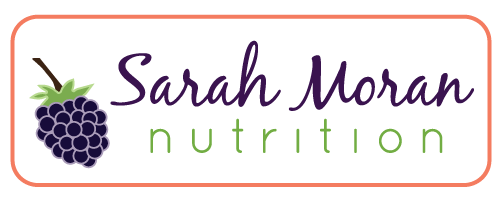Knowing how to read your food packaging and what all of those terms and phrases really mean can make all the difference when trying to make healthy choices at the grocery store. No one wants to think they're making the best choice, only to be duped by a clever marketing scheme. Ideally, a large portion of your food shouldn't have any labels because you're choosing lots of whole fruits and vegetables, but there are still many healthy choices that require you to be a savvy label reader.
In the Ingredients List
1. Whole Wheat flour (or "whole" followed by the name of any other grain)
This indicates that the whole grain was used, preserving it's healthy benefits.
2. Wheat Flour
This is another name for white flour. White flour is made from wheat, it is just a much more refined (less healthful) version.
3. Enriched Wheat Flour
Simply another name for white flour. "Enriched" (which all white flour is, by law) refers to the fact that several nutrients have been added to the flour. Essentially, they remove most of the grain's nutritional value to leave behind starch, and then throw some vitamins back in for good measure which are no substitute for all of the health benefits contained in the original whole grain.
4. Unbleached Wheat Flour
White flour rears it's ugly head once again.
5. Corn Sugar
A new name for high fructose corn syrup because people are avoiding products that contain it.
6. Chicory Root
This is an ingredient that is used to give a product more fiber. "Fiber" simply refers to matter that goes undigested in the human digestive tract. The fiber in fruits, vegetables, and whole grains is touted for it's bulking effect which promotes fullness and encourages healthy digestion. Fiber derived from chicory root, however, does not have these properties and associated health benefits. Many products use chicory root to add fiber without compromising flavor and texture, so read your ingredients list. Chicory root isn't necessarily "bad", but if you're paying for a high fiber cereal, you want the health benefits associated with it, not a product relying on loopholes and technicalities.
On the Front of the Box
1. Natural
This term is not regulated and has no strict definition. While it may make you feel like the product is somehow better for you, any item can have this on the label, no matter what the ingredients are. The only way to know for sure is to read the ingredients list yourself.
2. Organic

Any product labeled as "organic" and/or with the "USDA Organic" label must be made with at least 95% organic ingredients, excluding water and salt.
3. Made with Organic Ingredients
These products must be made from at least 70% organic ingredients, excluding water and salt. Any product with less than 70% organic ingredients cannot say it is organic anywhere on the packaging, but may note which ingredients are organic in the ingredients list.
4. 100% Whole Wheat/100% Whole Grain
This means that all of the wheat/grains used in this product are whole and no refined grains were used.
5. Whole Wheat/Whole Grain
This is one of those tricky terms. If a product simply states is is whole wheat or whole grain, but not 100%, this means that a majority of the grains used are whole, but refined grains are used as well. The problem is, you have no idea what that proportion is. If 51% of the grains are whole and 49% percent are refined, the product can labeled as "whole grain."
6. Multigrain
Many people see "multigrain" and think that a product is healthier. However, that is not necessarily the case. When you see this, it means that several grains were used in the manufacture of this product, rather than one. This does not however mean that the grains used were whole grains. For example, if a product contains white flour, corn, and oat flour, it's "multigrain." Again, in order to know the truth about the quality of ingredients, you absolutely must read the ingredients list.
7. "No Hormones" or "Hormone Free" on Conventional Poultry and Pork
While no one wants hormones in his or her meat products, it is important to know that hormones are used in conventional beef, but not poultry or pork. While this label may initially make you feel safer about your purchase, it does not represent any added benefit compared to other conventionally raised animals. Poultry and pork never have hormones, period.
Are there any other terms on food packaging that you find confusing?
 This past Wednesday there was a great victory in the world of real food and nutrition labeling: the FDA denied the Corn Refiner's Association's request to rename high fructose corn syrup as "corn sugar" on food labels. The application for a name change was submitted in 2010 due to the bad press that high fructose corn syrup, or HFCS, has received in recent years. HFCS is a highly processed sweetener made from corn. The reason it is so predominant in the food supply is that government subsidies (your taxes dollars) encourages the overproduction of corn, making it prevalent and cheap at the market place. This corn is then used to feed livestock that are not designed to eat it and altered to be made into various "ingredients" found in processed food. Oh, and it's GMO to boot.
No matter what your thoughts are on the safety of high fructose corn syrup (I never eat the stuff), this goes beyond its safety. The larger issue I see here is the consumer's right to know what is in the food they are eating. Ultimately, the name change was designed to confuse and deceive consumers by labeling the offensive ingredient as something that seems much more wholesome. If the name change had gone through, unaware consumers would have essentially had some of their power taken away in the market place. In a world where food and nutrition are often far more confusing that they should be, the last thing we need is a move such as this one.
This past Wednesday there was a great victory in the world of real food and nutrition labeling: the FDA denied the Corn Refiner's Association's request to rename high fructose corn syrup as "corn sugar" on food labels. The application for a name change was submitted in 2010 due to the bad press that high fructose corn syrup, or HFCS, has received in recent years. HFCS is a highly processed sweetener made from corn. The reason it is so predominant in the food supply is that government subsidies (your taxes dollars) encourages the overproduction of corn, making it prevalent and cheap at the market place. This corn is then used to feed livestock that are not designed to eat it and altered to be made into various "ingredients" found in processed food. Oh, and it's GMO to boot.
No matter what your thoughts are on the safety of high fructose corn syrup (I never eat the stuff), this goes beyond its safety. The larger issue I see here is the consumer's right to know what is in the food they are eating. Ultimately, the name change was designed to confuse and deceive consumers by labeling the offensive ingredient as something that seems much more wholesome. If the name change had gone through, unaware consumers would have essentially had some of their power taken away in the market place. In a world where food and nutrition are often far more confusing that they should be, the last thing we need is a move such as this one.

